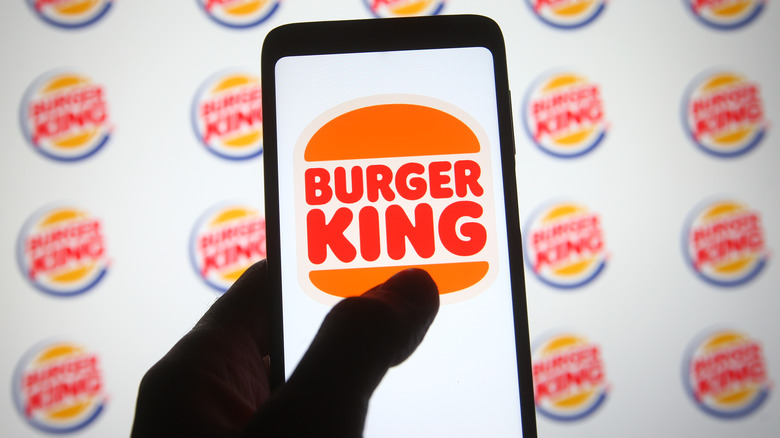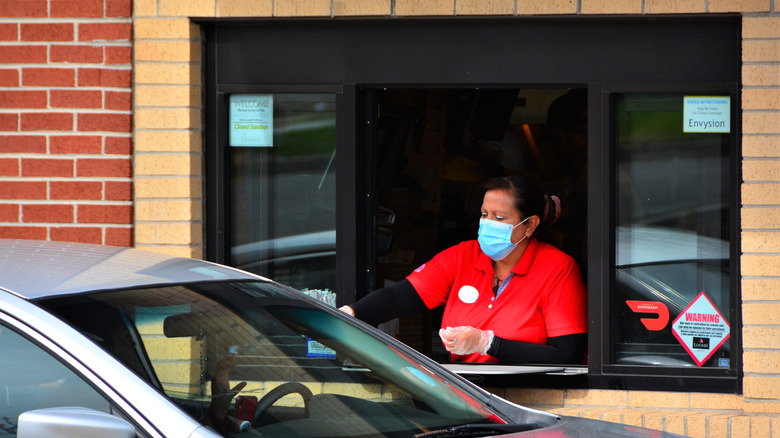The Surprising Reason Digital Orders Could Lead To Bigger Meals
Digital ordering, once the domain of a drunken night catered by Domino's, has entrenched itself as a permanent feature of the food landscape. We are still discovering what that actually means.
One thing we do know is it apparently means more money. Not just in terms of the amount of people ordering food on digital platforms, but the amount that each person orders as well. Talking to the Wall Street Journal, Deepthi Prakash, global director of product and marketing at the Omnicrom Group agency TBWAWorldwide, explained that without the human waiter hovering, customers do not feel the social pressure to order anything other than what they really desire. Typically, this means more food.
Starbucks workers have found a similar correlation between digital ordering and higher charges. Business Insider discovered that despite a 10% decline in actual transactions, each transaction was on average 22% more expensive, bringing the chain's overall sales up by 9%. Orders placed digitally consistently contained more complicated drinks (and more drinks in general) than their in-house counterparts. This data points to a future in which the entire industry could revolve around digital ordering.
Digital ordering alleviates the industry's self-inflicted problem
You cannot look at the implementation of digital ordering without acknowledging the labor issues the industry has faced as society has emerged from its lockdown. The Starbucks piece by Business Insider primarily focused on how stressful and labor-intensive the newer model of quick turnaround combined with nearly unlimited customization options can be for employees. One barista said the average drink order they receive costs more than what the coffee chain's employees make in an hour.
The fast casual dining establishments interviewed by the Wall Street Journal have predominantly turned to digital ordering as an attempt to keep service flowing while using fewer servers. The fact that people happened to order more with this method is really just a surprising perk.
"We'll look back and say why didn't we do this sooner," Shana Gonzales, a Checkers franchisee in Atlanta, told The New York Times. She raised entry-level wages from $9 to $10 — she found that if she raised them to $15, it would affect menu prices and potentially deter customers — but still struggled to find employees. Now, her Checkers is installing voice-recognition drive-thrus. Some, like Gonzales, see automation as a way to make work less taxing for the employees she does have. Ed Rensi, the former CEO of McDonald's, expressed a blunter perspective to Fox News: "Technology is always cheaper than people." Technology may also prove more profitable than people if customers continue to treat themselves more when ordering digitally.

